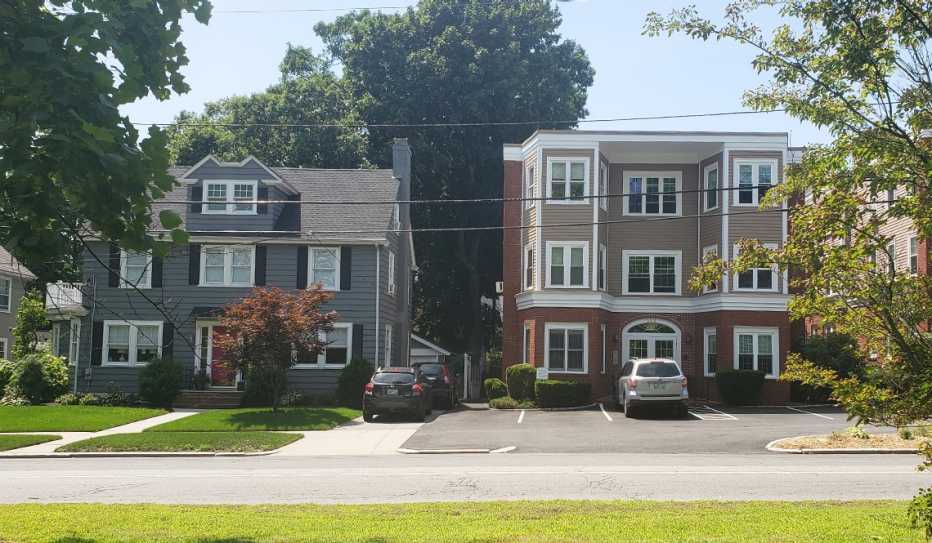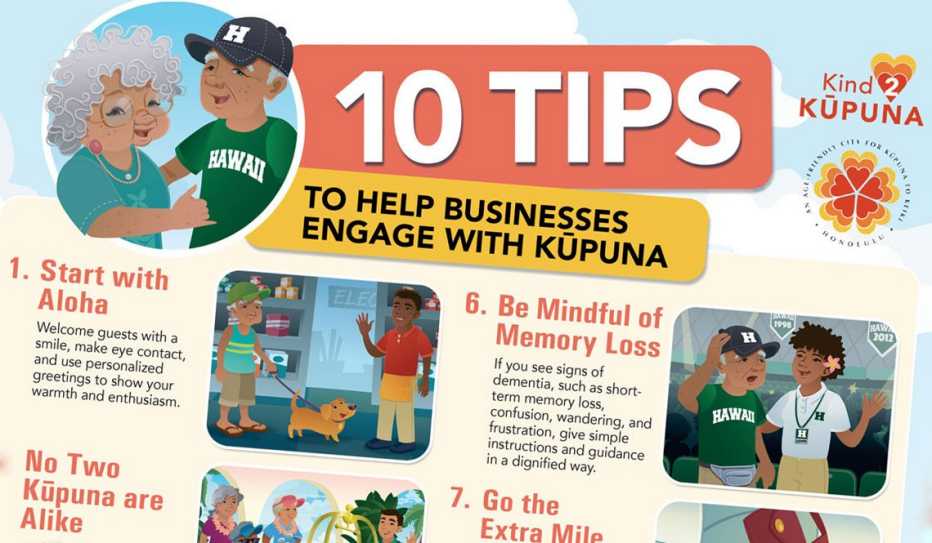AARP Hearing Center


Communities are experts in solving problems. But sometimes, it helps to call in an outside pro. AARP Livable Communities has teamed up with some of the nation's leading authorities in the fields of housing, transportation, public spaces and economic development. These technical experts consult with AARP state offices and local leaders to provide wide-ranging support — and lasting impact.
- Our video series, Livable Lessons, makes the expertise of AARP’s livability partners more widely available to community leaders
- Following is a summary sampling of just some of what’s been achieved
Expand Housing in Minnesota by Growing the 'Missing Middle'
Efforts to support more housing options at all price points became a sticking point for policymakers as the city of Minneapolis developed its 2040 Comprehensive Plan.


A vocal minority felt provisions to eliminate single-family zoning would negatively alter neighborhoods, especially in the more affluent parts of the city. However, data showed that a lack of affordable, accessible housing was a key challenge for Minneapolis residents — including older adults.
AARP added perspective to the conversation by partnering with the American Institute of Architects St. Paul to bring Opticos Design to the Twin Cities. Opticos founder and frequent AARP partner Dan Parolek delivered a lecture and led a walking tour (see video) that was open to city residents, housing advocates, municipal leaders and livability practitioners. Parolek explained how an increase in Missing Middle Housing — a term he coined to describe walkable, small- and mid-sized residences — could help solve some of the area’s affordability challenges.
With AARP’s support, the 2040 Comprehensive Plan passed 12-1 in the Minneapolis City Council and includes development guidelines for increased housing affordability.
Updating Rules for Accessory Dwelling Units in Vermont
An accessory dwelling unit — or ADU — is a small home or apartment that exists on the same property as a single-family residence. (See the sidebar to learn more.)


AARP Vermont helped the city of Burlington update its ADU regulations, with the goal of incentivizing more ADU development. The current guidelines were difficult to decipher, resulting in very few permitted ADUs. AARP partner Eli Spevak, founder of the Portland, Oregon-based Orange Splot, helped educate local policymakers and planners who were rewriting the regulations. Part of that work involved looking at best practice examples from other communities to show how to encourage ADUs and respect neighbors’ concerns.
In early 2020, a new ADU ordinance — which included several amendments championed by AARP Vermont — passed the Burlington City Council by unanimous vote. With the revised ordinance in place, and ADU permits on the rise, the AARP state office partnered with HomeShare Vermont to host ADU information sessions and produce an ADU guide for the Burlington metro region.
Making Hawaii's Capital an Age-Friendly City
In 2018, AARP Hawaii partnered with Smart Growth America to assist in drafting age-friendly criteria for testimony on Bill 54.


The legislation, which passed the Honolulu City Council and was signed by Mayor Kirk Caldwell, makes city services more age-friendly. Every municipal department was required to ensure that its services and projects are age-friendly, that a portion of its budget is devoted to age-friendly work, and that annual age-friendly goals are established with clear objectives for achieving them. Under the law, developers need to show how their projects benefit people of all generations and abilities, particularly in parks, public spaces and areas near transit stations.
The city now embeds age-friendly thinking — about affordability, livability and walkability — into its decision-making and planning, including for upcoming transit-oriented neighborhood development projects.
Improving Parks and Public Spaces in California
In 2019, AARP California wanted to provide resources to local members of the AARP Network of Age-Friendly States and Communities that were looking to improve parks and public spaces.


Working with AARP partner 8 80 Cities, the state office hosted a park audit workshop in San Jose, inviting volunteer leaders and community partners to use the worksheets and consider the recommendations featured in Creating Parks and Public Spaces for People of All Ages, a publication of AARP Livable Communities, 8 80 Cities and The Trust for Public Land. As a result of the workshop, participants were equipped to lead their own park audits and share the information in five regional roundtables attended by nearly 150 community leaders and elected officials from across the state.
AARP California also produced a video (viewable here) with 8 80 Cities founder Gil Penalosa in which he addresses five common questions about using parks and green spaces to build communities and places that are more inclusive, accessible and age-friendly.
Building a 'Better Block' in Maine
AARP Maine and a local age-friendly initiative, Community Friendly Connections, partnered with AARP partner Team Better Block in Old Orchard Beach.


Team Better founder Andrew Howard met with community leaders and residents to engage in a “pop-up” placemaking project in Old Orchard Beach’s Washington Square.
The short-term demonstration showcased the economic, safety and livability potential of the neighborhood, gathering more than 200 community members for an inexpensive, visual, 24-hour re-imagination of the street and adjoining buildings. Working together, volunteers and municipal employees created colorful crosswalks, added building accents and set up temporary restaurants. (See one eatery in the photo at the top of this article.)
The event culminated in a block party designed to harness the excitement of the neighborhood’s transformation. Overnight, the placemaking demonstration and party generated renewed interest in the area. (See page 38 of the AARP Rural Livability Workshop Report.) Since the gathering, Washington Square has seen new investments in housing and retail development. The activity also helped catalyze fundraising and community support for safety improvements and redevelopment in Atlantic Courts, the adjacent community park.
Providing a Park for Older Adults in Maryland
AARP Maryland tapped AARP partner The Trust for Public Land to help design and build support for a SeniorScapes Park (see the image at the top of this article) in the city of Frederick.
Tailored to the needs of the area's 60,000 older residents, their families and caregivers, the park will include fitness equipment, balance stations, brain games and sensory areas (including a music station) that address the physical, cognitive and psychosocial needs of older adults.
A report by The Trust for Public Land about the ways parks benefit the physical and mental health of older adults helped garner support for the project from local donors, foundations and community partners. The city is contributing the parkland and $130,000 in capital dollars, while private funders are tasked with raising $250,000 to finance the equipment, specialty features and programming.
Pivoting in Florida Due to the Pandemic
Working with Strong Towns and AARP Florida, the Miami-Dade Age Friendly Initiative hosted a webinar for 40 local stakeholders in September 2020, having moved to a virtual venue to accommodate COVID-era social distancing. The presentation featured examples and tools to help community leaders create financially strong and resilient places. A smaller, participatory workshop was held a day later to help 15 community leaders integrate Strong Town’s guidance into their age-friendly efforts. Watch a Strong Towns webinar hosted by AARP Livable Communities
Key Takeaways
Sharing ideas and solutions is an important first step
Many of AARP’s technical assistance interventions featured presentations and workshops designed to simply align residents and stakeholders around a topic and facilitate a difficult conversation. The livability experts highlighted ways in which similar challenges have been addressed in other communities, and sparked brainstorming and important discussions between stakeholders. By promoting the power of convening, the engagements showed that gathering relevant people together to share information and solutions can be just as important as the content itself.
Experts learn from us as much as we learn from them
AARP’s technical partners bring in-depth expertise to the issues addressed by the AARP Livable Communities program and AARP state offices. At the same time, AARP’s frame of community planning for older adults informs the work these practitioners do beyond their collaborations with AARP. By applying the AARP lens to their projects with other clients and in other contexts, the mission and goals of AARP become a part of their toolbox.
A small infusion of expertise can go a long way when tapped at the right time
The experts AARP Livable Communities introduced to their state office colleagues spent a relatively short amount of time (typically 8 to 24 hours) providing technical assistance. But when timed effectively — whether it be to lay strong groundwork, provide targeted research or inform a key decision point — the interaction made an outsized difference in the local efforts.
Sarah Dale is a consultant for AARP Livable Communities
Page published November 2020
Related
- Learn more 'Livable Lessons'


























































